By definition, publicity stunts are designed to capture public awareness, generate viral sharing, and earn media coverage. While these events can be notoriously high risk, the potential payoff in the form of massive amounts of press makes the gamble worth it. To get ideas for a public relations (PR) stunt to increase positive brand awareness for your business, here are some of the best examples of publicity stunts to draw from.
Here are 20 crazy publicity stunt examples that actually worked:
1. Oral-B Drone Deliveries Publicity Stunt

Oral-B’s pandemic response social stunt
Early in the global pandemic, Oral-B came up with a PR stunt, intending to ensure their brand-new high-tech Oral-B iO toothbrushes could be delivered safely. In August 2020, a fleet of Oral-B’s special delivery drones and robots were sent out to deliver toothbrushes to the press and influencers. Over the course of four days, multiple deliveries of the iO toothbrush were made across the U.K., delivering the products with absolutely zero human contact.
Why it worked: Despite the global panic about the pandemic, this publicity stunt example from Oral-B was a winner. It showed a perfect mix of technology and inventiveness in bouncing back and adapting to social distancing guidelines implemented by the government. Amid the collective anxiety, this PR stunt ultimately worked by offering hope for a new normal.
2. Red Bull’s New Moon Event

Red Bull’s New Moon Party brand stunt publicity event
Red Bull is known for its outlandish, publicity-generating antics and events. For example, on March 20, 2018, it hosted a New Moon Party, where people in wingsuits jumped out of helicopters above the tallest building in Los Angeles.
Surprisingly, this publicity stunt wasn’t all that crazy by Red Bull standards. However, the event caused a stir because the jumpers—fitted with a sparkler mechanism—dropped at sunset, leading those on the ground to believe comets or UFOs were descending on the city.
Why it worked: Red Bull has always been known as the “extreme child” of caffeinated beverage companies, but even brand devotees didn’t see this one coming. It not only captured media headlines but cemented its brand’s public image as dangerously exciting.
3. Visible Mobile’s Accidental Typo PR Stunt

Visible Mobile’s subtle typo-turned PR stunt example
The definition of publicity stunt is simply something done to get the public’s attention, and sometimes, that happens by accident. At first glance, Visible Mobile’s advertisement looked like just about any other mobile phone ad you might find strewn across a city. And yet, upon further inspection, where most other providers offer unlimited messages with their services, this ad boasted unlimited massages.
While it’s ideal for publicity stunts to be planned in advance, Visible Mobile took the opportunity to turn a typo into a PR win. Instead of explaining it off as a typo, Visible summoned the assistance of masseuses and offered free massages to passersby.
Why it worked: It owned up to its mistake and began offering a pop-up massage stand, allowing the public to enjoy the company’s grammatical error. But, more importantly, it helped to create a warm fuzzy feeling toward the brand—something mobile service providers aren’t known for and rarely manage.
4. Virgin Galactic Plans to Offer Flights to Space

Virgin Galactic’s ambitious brand publicity campaign
While the air travel industry tends to struggle to stand out and build a strong brand, Virgin excels—so much so that it’s going as far as space. As of May 2021, it is in the process of entering into commercial service for flights to space.
News of the program and the idea that the general public could go to space have landed a great deal of press. In fact, excitement has grown further as it became public news that several celebrities have already signed up to go to space.
Why it worked: Though this PR stunt doesn’t necessarily directly benefit Virgin Airline’s bottom line, it does increase brand awareness while developing its image as the airline that can take you beyond your wildest dreams.
5. Lego MRI Scanners Donation
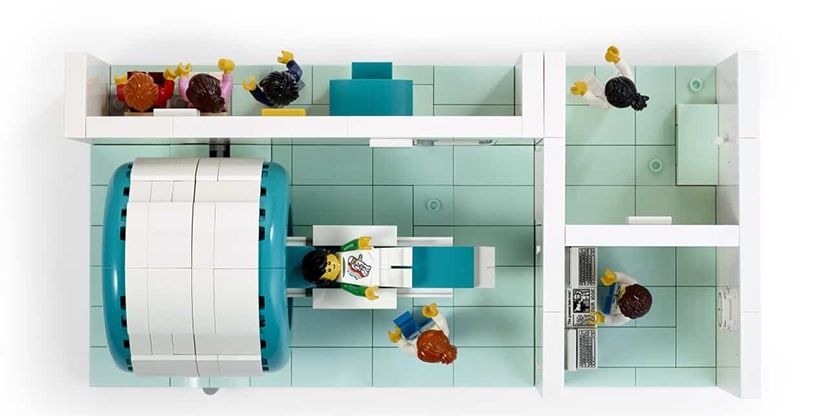
LEGO brand stunt example
On February 23, 2022, LEGO foundation announced a donation of 600 LEGO magnetic resonance imaging (MRI) scanners to hospitals worldwide. What was initially a passion project was piloted with new training material for hospital staff.
Lego’s donations were released in the hopes of helping children cope with the fear of MRI scans, turning a stressful experience into a positive and playful one. Since the release of its prototype, LEGO MRI scanners have been used to help hundreds of children aged four to nine annually.
Why it worked: Lego used the power of play to create a playful and comfortable hospital environment for children, encouraging role-play and dialogue to allow them to understand the process more easily. Hospitals revealed that these MRI models effectively ease children’s worries about their MRI scans.
6. Tinder’s Dozens of Dopes Date

Tinder publicity stunt for female empowerment
In a 2018 publicity stunt, meaning to drive brand awareness, Tinder held a PR stunt in New York City’s Union Square, where one woman invited dozens of unsuspecting men on the same date. The men were unaware that the date would involve many others, so they were surprised when they arrived to see a group of men and their date standing on a stage.
Why it worked: The stunt went viral as a social media marketing campaign, giving Tinder a lot of free press. It may be a laughable and low-cost stunt, but it landed Tinder free press and served as a conversation piece. It’s debatable whether the stunt was in line with the dating app’s brand image, but some argue that it displayed female empowerment. After all, the app has historically been known as a male-driven hookup platform.
7. KFC’s Brand PR Stunt Ad Visible From Space

KFC’s oversize PR campaign
In 2016, the fast-food chain Kentucky Fried Chicken (KFC) had the cosmic idea to create the first advertisement that could be seen from space. While most would never see the ad in person, it created a buzz after it found its way onto Google Maps and the corresponding Google Sightseeing Blog.
Why it worked: Longstanding businesses like KFC often suffer from consumer fatigue and need to work hard to stay top-of-mind. This outrageous marketing stunt got press coverage from several outlets, reaffirming KFC as an oversized fixture in the fast-food world. KFC managed to do so with this creative ad stunt—showing us that its fried chicken is tops wherever in the galaxy you are.
8. Daytona 500 Comes to New York City

An example of a publicity stunt promoting NASCAR
Days before the Daytona 500, a NASCAR Sprint Cup Series vehicle showed up in one of the busiest parts of New York City. It then remained parked there for three days, collecting tickets and eventually a boot (which had to be custom-made to fit the race car’s tire).
Why it worked: Despite the bustle surrounding busy NYC streets, the race car was attention-grabbing. It was out of place, and with the ever-growing number of tickets, the car was almost comical—looking as if the race car had speeding tickets. It effectively piqued the interest of locals and served to promote the upcoming Daytona 500 event—all for a pretty cost-effective price compared to other forms of advertising in downtown NYC.
9. Uber’s $63 Helicopter Rides

A brand publicity stunt by Uber
Uber took its ridesharing services to new heights when it started offering promotional helicopter rides to Uber users. It started the service in 2012 by chartering Uber helicopter rides from New York City to the Hamptons, giving upscale weekenders a way to get to the beach in style. The concept, while not long-lived, was surprising, though not illogical for a transportation company.
Why it worked: This worked because it demonstrated that Uber is forward-thinking in terms of transportation services. It’s a good example of how a business can create a positive PR stunt connected to its normal product offerings, but unique and exciting enough to attract media attention.
10. Taco Bell ‘Buys’ the Liberty Bell
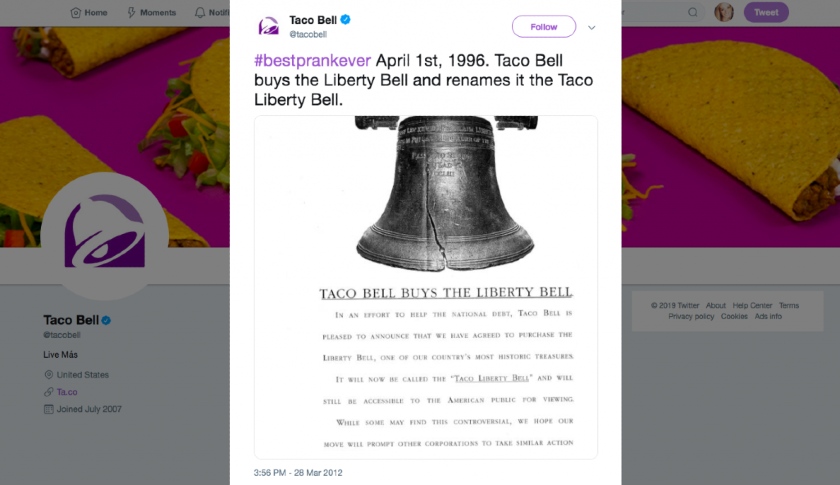
The iconic Taco Bell Liberty PR campaign
Back in 1996, Taco Bell played a joke on the nation when it submitted press releases to major news outlets—from The New York Times to USA Today—stating that it was purchasing the Liberty Bell. The response was a countrywide outrage at the atrocious idea of a Mexican-themed fast food restaurant buying America’s foremost symbol of freedom.
Why it worked: This legendary campaign from Taco Bell cost the fast-food giant upward of $300,000. That may sound like a lot, but Taco Bell got the last laugh. Priceconomics reported that they got around $25 million in free publicity from the stunt. It wasn’t a stunt that helped with the branding or even its image in the public eye, but it successfully got the taco giant plastered in the news.
11. Reese’s Giant Chocolate Bar Rivalry
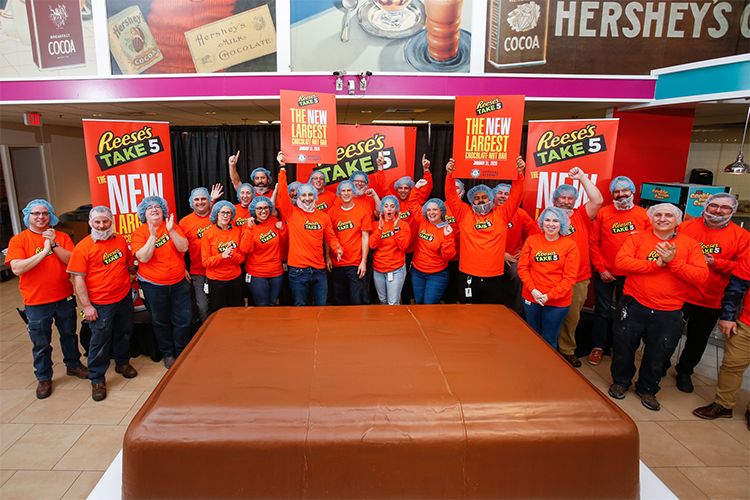
Positive publicity for all from competitive PR wars
In January 2020, there was fierce competition for the world’s biggest chocolate nut bar to celebrate that year’s Super Bowl. At first, Snickers unveiled its largest chocolate bar at 4,700 pounds (the weight of 43,000 single Snickers bars put together).
They were immediately certified by Guinness World Records. However, just two weeks later, Hershey’s broke this record with a massive 5,900-pound Reese’s Take 5 chocolate bar.
Why it worked: The Super Bowl is the biggest television event of the year in the U.S., so brands use this to tie their biggest ad campaigns to football’s biggest game. Hershey’s overtook the biggest brand advertisement of the season with a chocolatey record of their own. The fact that it only took two weeks for them to break the record is an impressive “trick play” that everyone was surprised to see.
12. Jaguar’s Fastest Barrel Roll in a Car

Publicity stunt example showcasing Jaguar’s tough luxury
When luxury automaker Jaguar released its first midsize SUV, it decided to make a media splash by teaming up with the Guinness World Records. To capture mass attention and show that Jaguar was capable of more than high-end sedans, it devised a scheme to break a world record. It completed the fastest barrel roll in a vehicle using its very own SUV.
Why it worked: Breaking a world record is usually a good way of getting press, but Jaguar used the stunt to show people how rugged its new SUV was. The awe-inspiring, dangerous stunt gained the media’s attention while helping to construct a sporty, more rugged brand image in the eyes of consumers. So naturally, the affair increased interest in its new SUV.
13. National Geographic’s Public T-Rex PR Stunt

National Geographic’s sick T-Rex publicity campaign
What appeared to be an injured T-Rex (Tyrannosaurus rex dinosaur) strapped to the back of a flatbed truck was seen cruising around the streets of London in what turns out to be a bizarre PR stunt brought to you by National Geographic. Naturally, the strange sight caught a great deal of attention.
Why it worked: It’s not every day you see a life-sized dinosaur replica, and never mind one being driven throughout the city. Not surprisingly, this put a lot of eyes on National Geographic and landed it a great deal of free press.
14. Tesla’s First Car in Space PR Stunt

PR stunt example with Tesla sending a car to Mars
Tesla doesn’t do much traditional advertising, but that doesn’t mean it’s not heavily marketing in other ways—including with publicity stunts meaning to generate buzz. In 2018, Tesla launched one of its Roadster models into space via a SpaceX rocket ship (both brands owned by Elon Musk). The spaceward stunt had a 50% chance of failure, but Musk opted to go for it anyway, landing them boasting rights as the first automaker in space.
Why it worked: Naturally, Tesla’s out-of-this-world stunt got a lot of press. What it also did was position Tesla in the minds of consumers as a high-end, modern, and “out-of-this-world” automaker—setting it apart from other luxury automobile manufacturers that are often deemed stuffy and boring.
15. McDonald’s Women’s Day Flip
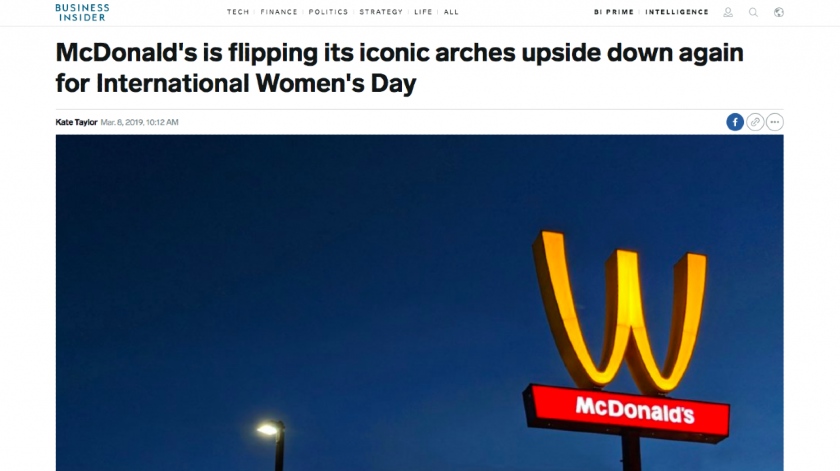
McDonald’s turned its brand upside-down for Women’s Day
McDonald’s showed its support for women on International Women’s Day in 2019 by flipping its logo upside-down. Consumers around the world were caught by surprise to see the iconic golden arches flipped on its head. Many were left wondering if it was a prank, causing the PR stunt to gain a lot of press.
Why it worked: This stunt was a clever, low-cost way of showing McDonald’s support for women. In fact, it started several conversations about gender-based workplace biases. The stunt was met with some negativity from those who thought it overlooked the deeper meaning behind Women’s Day, though it did give McDonald’s the stage to share its stance on gender equality.
16. Bitcoin Fake Protest

Bitcoin’s fake protest for publicity gained issue awareness
Protests don’t sound like a PR stunt, yet they’re surprisingly common—and it’s not just about protesting against a rival brand. Companies are even staging protests at their events and against their own companies. For example, Bitcoin staged a protest of 8,500 people at the 2018 Consensus Blockchain Conference in NYC with the goal of getting press in a market flooded with noise.
Why it worked: Years later, we can see that Bitcoin’s goal was achieved. The idea behind the stunt was to gain the attention of people who have not yet invested in Bitcoin. While this is undoubtedly a risky stunt that gambles with negative press, it did manage to garner serious attention from the public—and publicity.
17. Richard Branson’s Publicity Stunt Around the World
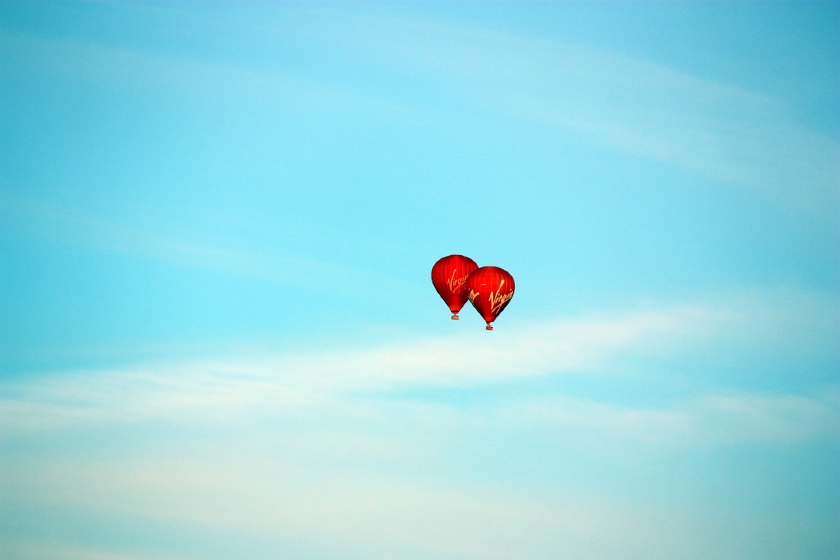
Modern-day adventurer Richard Branson’s around the world publicity stunt
Virgin Airlines’ famous CEO Richard Branson has proven himself to be something of a PR stunt expert and adventurer over the years, participating in several stunts landing the airline media headlines. One of his biggest stunts, however, involved a trek around the world—not in an airplane, but in a Virgin Airlines’ hot air balloon.
Why it worked: The first attempt to not only cross the Atlantic, but the world, in a hot air balloon was fascinating to many; it wasn’t a trek most people thought possible. To add even more press-fuel to the fire, the stunt ended with a crash, leading to near-death headlines that the media (and world) love. One would imagine this to be a black mark for Virgin Airlines, but it proved to be the opposite, showing that airlines are the safe mode of transport for globetrotters.
18. Frank’s RedHot Digital Spin the Bottle
In celebration of Frank’s RedHot 100th Celebration, they decided to livestream a massive Spin the Bottle party with plenty of exclusive prizes on the line. Instead of kissing, the game included dares, truths, and surprises for the fans.
They aired the livestream on February 2, 2020, the night of the Super Bowl. Viewers from anywhere could participate just by responding to prompts using the competition’s official hashtag. It was a hit with fans, including celebrities, with notable names like Donnie Wahlberg getting into the game.
Why it worked: During the 2020 Big Game, almost every viewer was hooked on Frank’s RedHot party game, and their fans dominated Twitter conversations among brands without a single ad. Everyone was hoping to win the grand prize: $36,500, equivalent to $1 for every day Frank’s had been running in the market.
19. Tinder’s ‘Swipe Right to Adopt a Dog’ Publicity Campaign
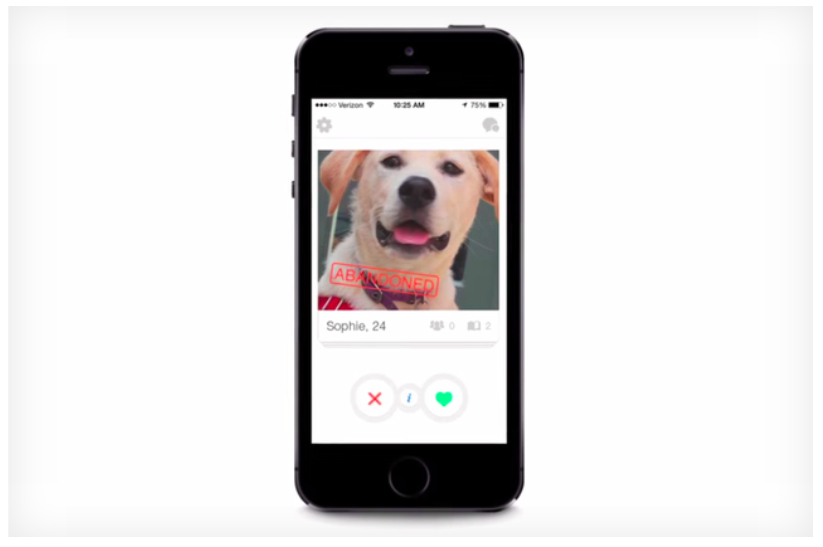
Tinder scored positive publicity with its adorable adopt-a-dog event
In 2014, Tinder used its dating platform in a surprising new way, aimed at connecting singles to dogs available for adoption. The promo stunt was conducted in partnership with a U.S. animal rescue organization, creating a feel-good attitude toward the dating app. This was undoubtedly a boon, as the app has long had a reputation for facilitating risqué connections.
Why it worked: The Tinder stunt successfully generated over 2,000 matches—or adoptions—in its first week. This showed that the platform’s design could be applied to charitable efforts and have a positive impact. In the saturated dating app market, companies struggle to set themselves apart, which successfully positioned Tinder as a company with a uniquely altruistic, pet-loving bent.
20. Israeli Food Bank’s Cause-based Publicity Stunt
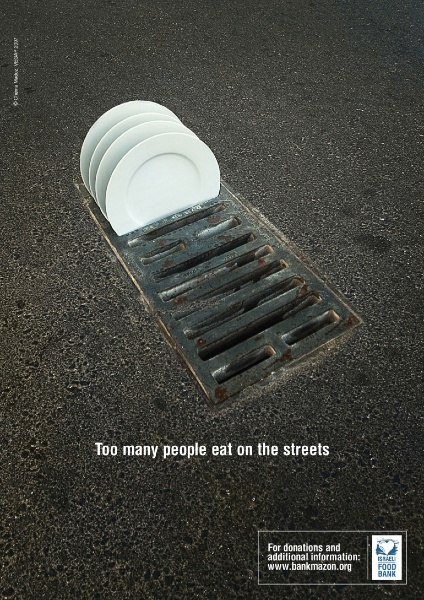
Driving cause awareness is a common goal of PR stunts
In an effort to increase public awareness of hunger and starvation, the Israeli Food Book distributed dinner plates across the city, setting them in sewer grates like a dish rack, with the message “too many people eat on the streets.” The low-cost publicity stunt provided evidence that creativity can overcome a low budget for landing publicity.
Why it worked: By bringing the marketing campaign to the streets in an obscure way, the nonprofit effectively captured the attention of locals, bringing awareness to their message. In return, the cause received an increase in public donations.
Frequently Asked Questions (FAQs)
What are the best tips for getting PR?
Getting public relations, or PR, coverage isn’t easy, but there are ways to improve your chances of getting your story on the news without the need for a crazy publicity stunt. This includes everything from understanding what is considered newsworthy to creating an event that people will talk about, promoting a positive brand image, making connections with journalists, and knowing how to send a press release.
What is a press release?
A press release is a statement distributed to the media that explains the essentials of a piece of news or event in 300 to 500 words. They need to follow a standard press release format and be distributed effectively to gain the media’s interest.
Before you hold your publicity stunt, make sure you issue a press release to the media. Learn how to write a press release that will get picked up step-by-step, including a free template you can download and use as you follow along.
What are the best outlets for distributing a press release?
There are several good press release distribution services, including EIN Presswire and Newswire. The best outlet for distributing press releases for your business or event depends on how often you send press releases, how many outlets you want to reach, your budget, and your target media channels. It also depends on whether you need writing services plus distribution—for this, we recommend eReleases.
Bottom Line
Done right, these PR stunt examples show that publicity events can be an effective way for businesses to market themselves and gain larger audiences. Brainstorm your own campaign by coming up with an interesting and creative idea, developing a strategy, and reaching media outlets with press releases. For a faster, more affordable, and less risky way to land press quickly, send a press release using a reliable distribution service like eReleases.
You Might Also Like…
- Need to avert negative publicity? See how to write a crisis press release in a few simple steps.
- Get help from the pros—let the best digital marketing agencies for small businesses put your business on the map.
- To grow your small business, check out our list of cheap and free small business marketing ideas.

